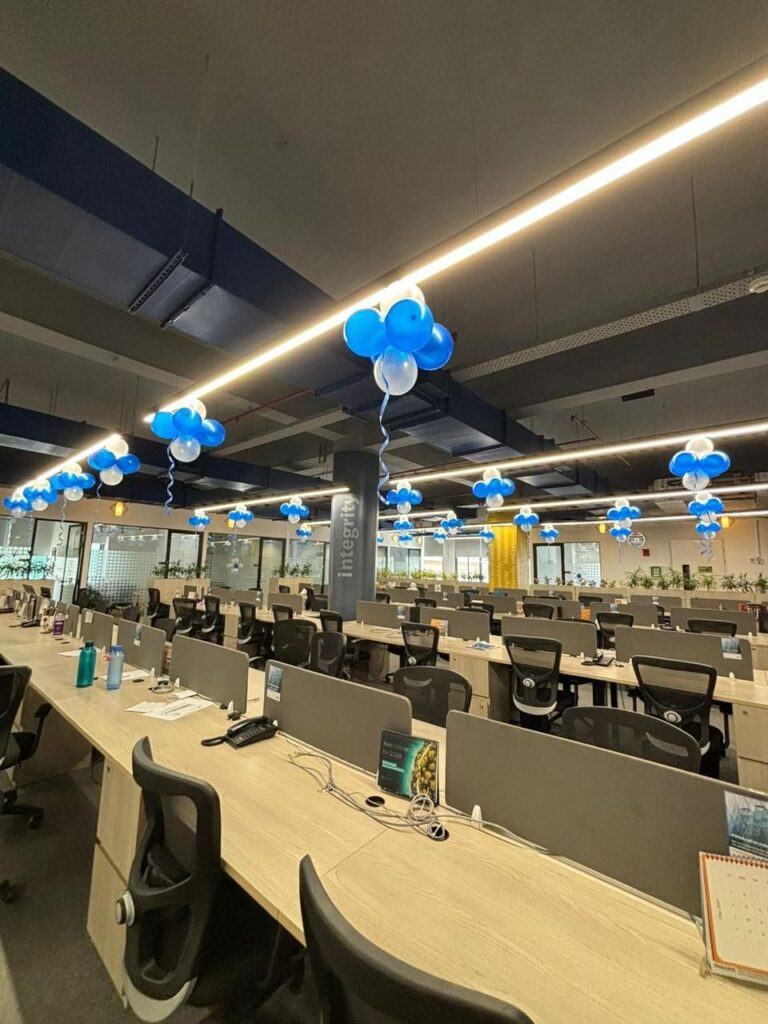
Menu
The Ultimate Guide to Planning a Successful Corporate Event
Corporate events have evolved into strategic platforms for organizational growth. When thoughtfully designed, they drive brand positioning, employee engagement, client relationship building, and thought leadership. From high-profile product launches to immersive team-building experiences, a meticulously planned corporate event leaves a lasting impression and delivers measurable business impact.
This guide simplifies corporate event planning into six essential steps — from setting objectives to post-event analysis — making it easier to execute with excellence.
This guide simplifies corporate event planning into six essential steps — from setting objectives
to post-event analysis — making it easier to execute with excellence.

Why Corporate Events Matter
Corporate events enhance brand visibility, create opportunities for high-value networking, drive
employee engagement, and generate measurable leads and revenue. They are no longer just
meetings but strategic experiences that elevate your organization’s reputation and reach.
Step 1: Define Objectives and Budget
Every impactful corporate event begins with a clearly articulated purpose. Identify your desired
outcomes — such as brand awareness, team-building, product launches, or client engagement —
and determine your target audience. These decisions shape your budget.
Map out your financial plan early, including venue, catering, technology, entertainment,
marketing, travel, and a contingency fund. Tracking expenses ensures you can deliver a
high-quality experience without overspending.
Step 2: Select Venue and Timeline
Your venue sets the tone. Choose one that reflects your brand identity, is easily accessible, and
has the infrastructure needed for flawless execution. Consider capacity, location, facilities, and
ambience — and book well in advance.
Alongside venue selection, create a detailed timeline. Plan months ahead for major tasks
(booking vendors, confirming speakers, launching promotions), schedule rehearsals and final
checks closer to the event, and reserve time for post-event follow-up.
Step 3: Curate Engaging Content and Experiences
Content is the heart of a memorable corporate event. Align sessions, speakers, and activities with
your audience’s needs. Include interactive elements like workshops, polls, Q&A, or demos to
boost participation. Add memorable touches such as branded installations, gamified activities, or
unique entertainment to elevate the experience and strengthen brand recall.
Step 4: Use Technology and Branding Strategically
Leverage technology to simplify logistics and enhance engagement. Event management
platforms streamline registration and tracking, while mobile apps provide real-time updates,
agendas, and networking tools. For hybrid events, integrate live-streaming and on-demand
content.
Pair technology with strong branding. Maintain a consistent visual identity across invitations,
signage, presentations, and merchandise. Promote your event via social media, email campaigns,
and PR to build anticipation and extend its reach.
Step 5: Prioritize Guest Experience and Logistics
A smooth guest experience defines event success. Communicate schedules and venue details
early, streamline registration, ensure comfort and accessibility, and cater to diverse dietary
preferences. Personalized touches — welcome kits, networking lounges, or photo booths —
create a sense of exclusivity.
Behind the scenes, manage vendors and logistics with clear agreements, regular check-ins, and
contingency plans. A polished back-end operation lets your team focus on content and attendee
engagement.
Step 6: Rehearse, Follow Up, and Analyze
Conduct a full run-through to test event flow, technology, and speaker coordination. Review
emergency protocols to minimize surprises on the day.
After the event, send thank-you notes, collect feedback, and analyze attendance, engagement,
and ROI. Apply your findings to future events to continuously improve your outcomes.

Common Mistakes to Avoid
Even seasoned planners can overlook critical elements. Be mindful of these common pitfalls:
Avoiding these missteps will help you deliver a polished, efficient, and memorable corporate
event.

Conclusion
Planning a successful corporate event doesn’t have to be overwhelming. By defining objectives
and budgets, selecting the right venue and timeline, curating great content, using technology and
branding strategically, prioritizing guest experience, and wrapping up with thorough analysis,
you create a powerful platform for engagement, visibility, and growth.
At Lemon Chilli Media Solutions (LCMS), we specialize in end-to-end event planning and
execution. From concept development to on-ground coordination, our team ensures every detail
aligns with your goals and brand identity. With expertise in corporate event management,
creative production, and branding, LCMS helps you deliver events that impress and drive
measurable outcomes.
Let LCMS handle the planning while you focus on creating lasting impressions — because
every great event deserves flawless execution.